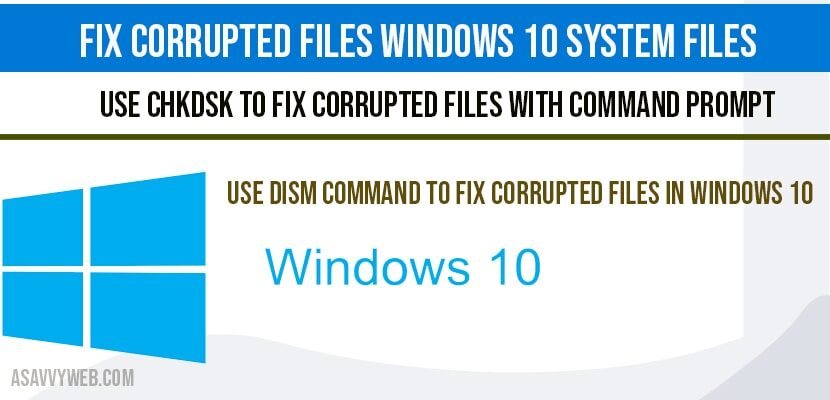
- Repair corrupted files in cmd windows 10 how to#
- Repair corrupted files in cmd windows 10 drivers#
- Repair corrupted files in cmd windows 10 software#
System File Checker is a command-line tool that scans Windows system files for corruption and replaces any corrupted or missing protected system files with a known good version.
Repair corrupted files in cmd windows 10 how to#
How to Repair Windows 10 Using Command Prompt? Fix 01: How to Repair Windows 10 Using sfc
Repair corrupted files in cmd windows 10 drivers#


For such a registry backup to work in Windows 10 1803,1809,1903,1909,2004 and newer Windows 10 builds, you need to manually turn on automatic registry backup through the special reg parameter (this must be done beforehand before problems with the registry appear). On Windows 10, the registry files are automatically backed up to the C:\Windows\System32\config\RegBack folder. If these commands did not fix your problem, you need to restore the registry from the last restore point or registry files backup. If the SFC utility found errors and couldn’t perform a repair ( Windows Resource Protection found corrupt files but was unable to fix some of them), you need to check and repair the component store using the DISM command: DISM /Online /Cleanup-Image /RestoreHealth If the utility finds a damaged system file, it will try to repair it. Open a command prompt as an administrator and run the command: sfc /scannow It is recommended to use the Dism.exe and Sfc.exe command-line tools to check the integrity of system files (including registry files), and fix the errors. However, starting with Windows 7, Microsoft stopped supporting the Scanreg.exe tool. In earlier versions of Windows, the Windows Registry Checker tool (Scanreg.exe) was available to automatically back up the registry, and check the registry for invalid entries, empty data blocks, and other errors.

If your Windows does not boot correctly due to the damaged registry, you need to check the integrity of the registry files. In addition, the registry files NTUSER.DAT and USRCLASS.DAT are stored in the profile of each user (C:\Users), which contains the user settings (loaded to the HKEY_CURRENT_USER registry hive).SYSTEM (HKLM\System) - settings for computer’s hardware, settings for Windows services, drivers, and other low-level information.SECURITY (HKLM\Security) - Windows security settings.

Repair corrupted files in cmd windows 10 software#


 0 kommentar(er)
0 kommentar(er)
